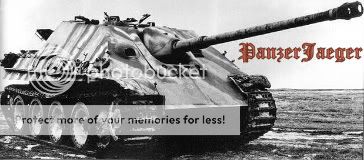Some of the blitzkrieg principles apply equally well to armor in the defense, and where they do not an understanding of them points the way to countering them. We spoke of moment and momentum as strengths of the armored offensive. The attacker loses both these when he is unable to move forwards or sideways - in other words when he is contained. The counter is thus simply: first contain, encircling if possible; then destroy.
Unfortunately the Wehrmacht's operations feature rather few instances of well-conducted defense and these are mainly at divisional or at most corps level. Hitler's (and Goering's) repeated interventions, mostly featuring refusals to give ground laced with accusations of cowardice and treachery, prevented the field and air commanders on the Eastern Front from conducting the kind of defense which they wanted and which would surely have influenced the duration of World War II in Europe and the situation at its end.
Manteuffel's handling of the Pz.Gr.Div. Grossdeutschland at Targul Frumos (northeast of the Ploesti oilfield region) on 2 May, 1944, is one of the best examples. This battle is also of interest as the Germans' first encounter with the Soviet heavy tanks in the shape of KV85. Schematically the ground is a horseshoe ridge with the opening facing roughly northeast and the left (west) side higher and longer than the right. There is rolling to hilly ground north of the horseshoe's opening. At the apex.of the horseshoe, above and to the south of the town of Targul Frumos, is a dominating hill on which Manteuffel set up his battle headquarters. He established both his infantry regiments, stiffened with jagdpanzers in depth and all other antitank weapons including a battery of 88mm guns, along the base of the horseshoe, with his tank reserve in depth. He deployed his reconnaissance and some tanks in the rolling ground about 8km to the north of the main position.
The Soviets advanced in strength with massive artillery support, mainly with tanks and evidently with the base of the horseshoe as their initial objective. Manteuffel's forward tanks fell back and to their left with fire and movement, drawing the enemy into the killing ground enclosed by the horseshoe and towards the southwest corner. The infantry were in concealed positions, which they had had several weeks to prepare. They lay low and allowed the Soviet tanks to pass through them, then took on the supporting infantry. The first crisis seems to have been caused by the Soviet heavy tanks thrusting down the west ridge just as the pressure on the southwest corner began to build up. Manteuffel used his tank reserve under his personal command.
Meanwhile the panzerfüsilier regiment on the right had deliberately been left entirely without tank support for over 2 hours. They were badly overrun and broken through, and the regimental headquarters had itself become involved in driving off a Soviet tank attack. Nevertheless they had held firm and succeeded in pinning down the enemy infantry. Then the Soviets, exploiting success, put in another tank attack on them.
After about 2 hours of intensive fighting, Manteuffel sensed a weakening of resolve on the part of the Soviets facing his left. Rather than counterattack at that stage, he took personal command of a company of Pzkw IVs and led his tank regiment, by now replenished, across to the right and straight into the attack off the line of march. His account says he appeared on that sector at 11.55 hrs - 5 minutes before the time he had promised the regimental commander. The tank regiment drove the Soviets right back with heavy losses.
That night he passed two companies each of Tigers and Panthers through the infantry into forward positions. These together with air support sufficed to beat off subsequent Soviet attacks. No ground had been lost; an estimated 350 Soviet tanks and SU guns were destroyed at an exchange rate better than 20:1; and Manteulfel's force remained capable of operating effectively at its previous level.
I have dwelt on this battle because it well represents the defensive side of the blitzkrieg coin and is a model of great relevance today. The hammer-and-anvil principle was of course used to excellent effect by Montgomery in the battle of Alem Halfa though his hammer blow consisted - typically perhaps - mainly of tank fire rather than tank maneuver. Manteuffel combined this tactic with two others. One had been much employed by the Afrika Korps at lower levels - the use of an actually or apparently weak force of tanks as a bait to draw the enemy onto a screen of (in those days) antitank guns. The other was to separate the enemy tanks and infantry by allowing the enemy tanks to overrun the defending infantry in the anvil, and then to destroy both in detail.
"Easy come, easy go", runs the saying. Armored forces properly handled can gain vast areas of territory rapidly and achieve strategic success by disruption of the enemy forces. Conversely the defense against an armored offensive calls for great speed and scope of maneuver. Real estate has to be traded off for time and - paradoxically enough - space if disruption is to be avoided and containment achieved. This is the dilemma that currently faces NATO's land forces -and most of all the FRG.







 Reply With Quote
Reply With Quote












 Silence is beautiful
Silence is beautiful

Bookmarks